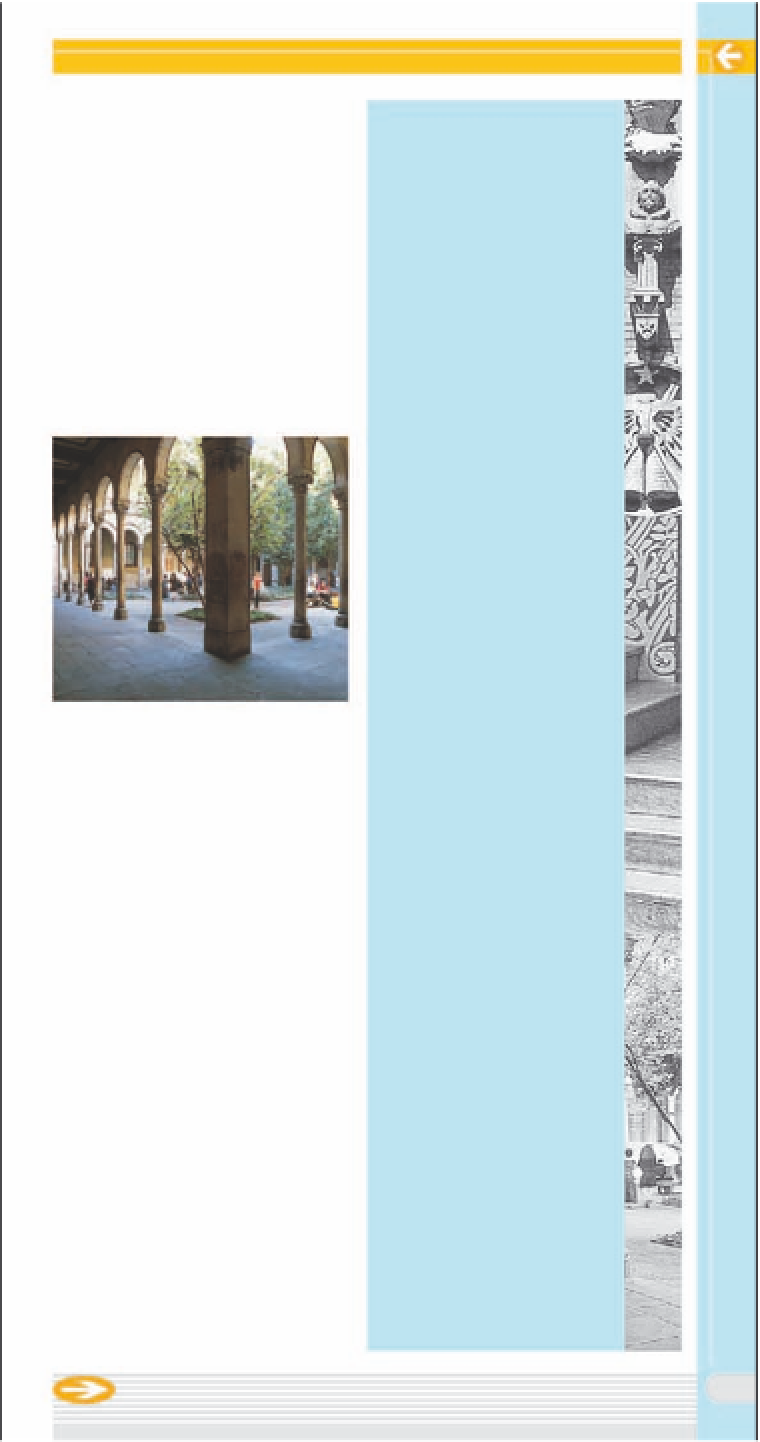Travel Reference
In-Depth Information
*
Rambla de Catalunya
The Modernista Route
Morning
Pop into the decrepit chess
bar El Pato Loco (cnr Dipu-
tació & Aribau) to get a
sepia picture of Barcelona
that hasn't changed for a
century. Wake up with a
cafè solo
and watch the old
men playing speed-chess,
then stroll around the
gardens of the
Universitat
Head east along Gran Via
past the elegant Palace
Barcelona Hotel
(see p143)
and right down C/Bruc for
your first real taste of
Catalan Art Nouveau, with
Gaudí's
Casa Calvet
(see
p107)
on C/Casp. Turn right
onto C/Casp and walk three
blocks west to the majestic
Pg de Gràcia; then go right
again three blocks to the
impressive buildings known
as the
Mansana de la
Discòrdia
(see p103)
and
the
Perfume Museum
(see p41)
. Sniff around
Regia
perfume shop
(see
p106)
before continuing
north to marvel at Gaudí's
La Pedrera
(see pp20-21)
.
Feeling peckish? Stop at
Tragaluz
on Ptge de la
Concepció
(see p109)
. The
set menu is an enjoyable
way to experience this
glitterati hang-out.
This elegant extension of
the better-known Rambla is a
more up-market version. Lined
with trees that form a leafy
green tunnel in summer, it
boasts scores of pretty façades
and shops, including the
Modernista
Farmàcia Bolos
(No. 77). The avenue teems
with terrace bars and cafés,
which are ideal for people-
watching.
See also p50
.
d
Map E2
Interior courtyard, Universitat de Barcelona
(
Universitat de Barcelona
Until 1958, this was the
only university in Barcelona -
today it is one of six. The
graceful building (1861-1889)
occupies two blocks of the
Eixample and has a distinct
air of academia. The interior
gardens with their fountains and
patios make for a cool, shady
hideaway on hot afternoons.
d
Pl de la Universitat • Map E3
Afternoon
After lunch, head north on
Pg de Gràcia, turn right
along Diagonal, taking in
the fairy-tale
Casa de les
Punxes
at No. 416
(see
p33)
. Walk along Diagonal,
making a detour left at Pg
Sant Joan to see
Palau
Macaya
at No. 108. Then
stroll along C/Mallorca
to the
Sagrada Família
(see pp8-11)
. Here you
can take in the Nativity
Façade and rest weary
legs in the Plaça de Gaudí
before climbing the bell
towers for a breathtaking
view of the city.
)
Museu Egipci
Spain's most important
Egyptology museum houses
more than 350 exhibits from
over 3,000 years of Ancient
Egypt. Exhibits include
terracotta figures, human and
animal mummies, and a bust
of the lion goddess Sekhmet
(700-300 BC).
d
C/València 284
• Map E2 • Open 10am-8pm Mon-Sat,
10am-2pm Sun • Adm
105




















































